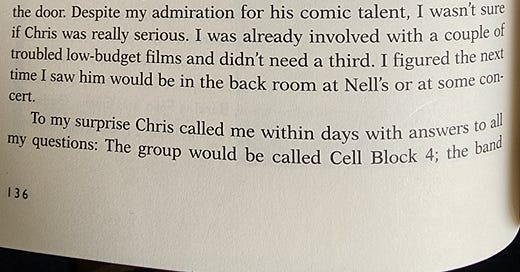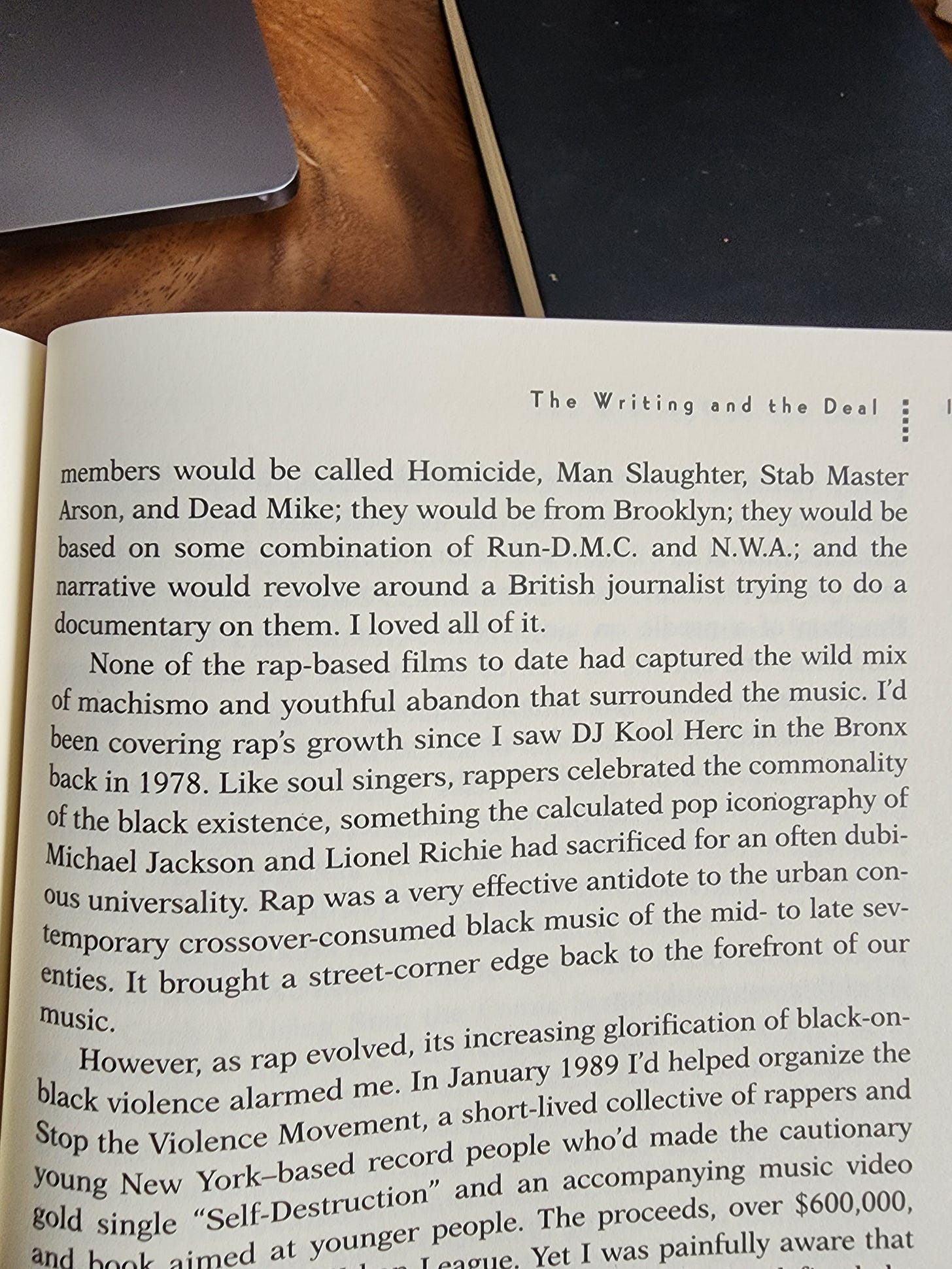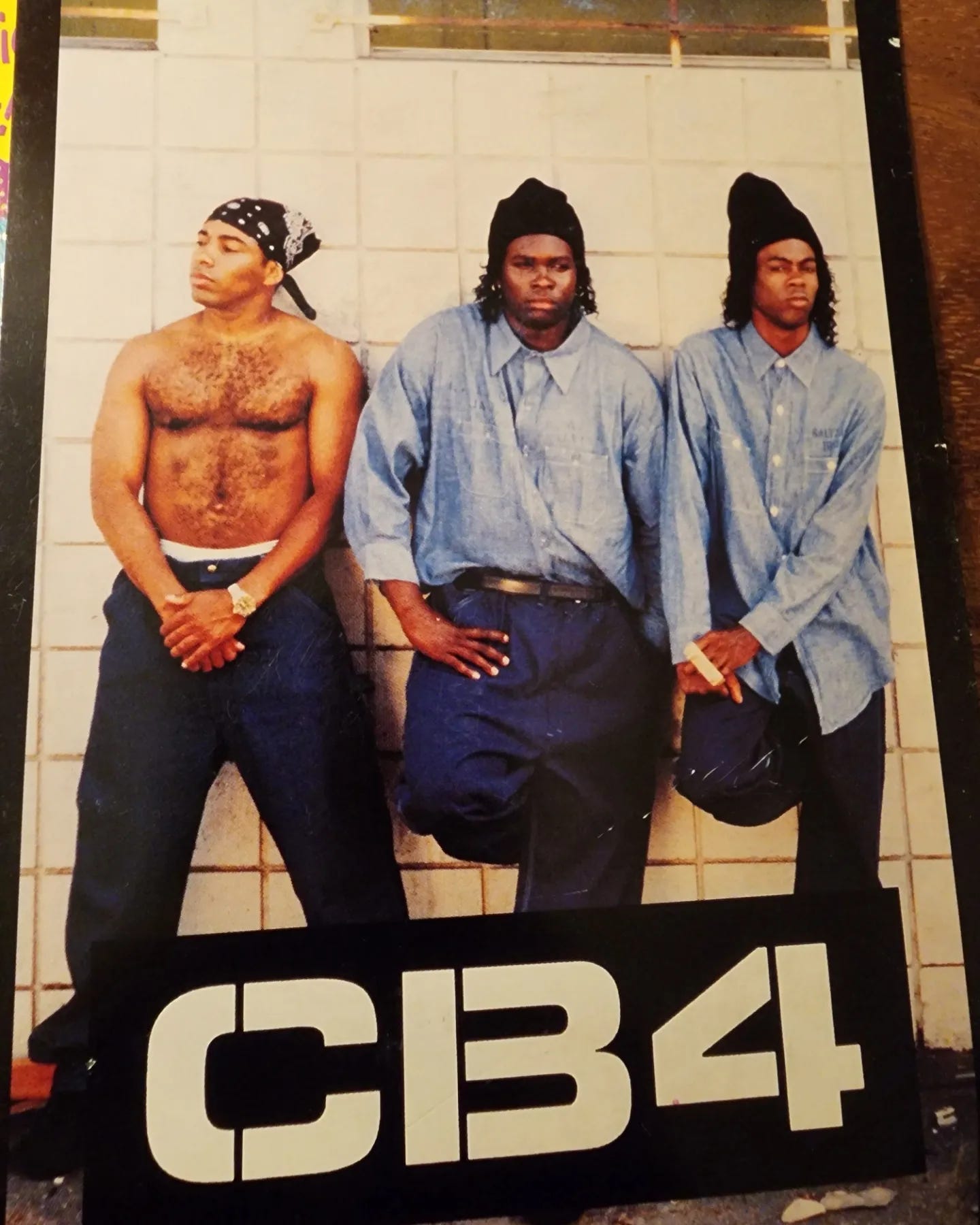Today thirty years ago the comedy CB4 opened. It’s amazing to think Chris Rock and I got that crazy film made, particularly since in 1993 hip hop was nowhere near the cultural force it became. It was always conceived as a low budget cult film which, in that era, was still commerically viable for a big studio like Universal. I wrote at lenght about the journey to getting that film written, shot and released in my book ‘Blackface: Reflections on African-Americans and the Movies.’ I’ve posted a couple of relevant pages along with some pix from the production and the script. CB4 wasn’t an Oscar contender, but it made over $6 million that weekend, despite an epic east coast snow storm, and ended up with a modest $17 million at the box office.
It’s lasting legacy is the idea of “the studio gangsta,” an MC who adopts the exploits or name of an infamous street legend to make their recordings feel “authentic.” In our world the criminal Gusto (played with over the top swagger by the late Charlie Murphy) becomes the inspiration for Albert Brown (Chris Rock) to name himself MC Gusto. Later the MC 50 Cent would take his moniker from a Brooklyn stick up legend of the same name, while Miami’s Rick Ross would take his name from the crack kingpin Freeway Rick Ross.
Also this Afrocentric parody below (so well played by Allen Payne) has become a black history month staple.
Director Tamra Davis had made a name for herself handling great videos for the DOC, Tone Loc and Young MC. She understood the visual cliches of the genre and was super collaborative with Chris and myself. We had two big dog Hollywood executive producers, Brian Grazer and Sean Daniel, and great support from line producer Bill Fay. Reggie Hudlin suggested the black editor Earl Watson, who’d cut ‘House Party.’ Our Fort Greene neighbor and ex-Def Jam executive Bill Stepheny was the music supervisor, which was a key job on this film, while the late John Barnes created the score with some music cues provided by the Pharcyde.
The cast was deep with talent, including comedians Phil Hartman, Chris Elliott, and the future Pooty Tang, Lance Crouther. The late Deezer D, Rachel True, Khandi Alexander, Theresa Randle, and Stoney Jackson rounded out the cast, alongside a slew of celebrity cameos (Halle Berry, Flavor Flav, Shaq O’neal, Ice-T, Eazy E). Eazy was particularly fun to work with since, clearly, he was a visual model for Chris’s Gusto. He got the joke and played along.
Looking back on the film now we really knew nothing about traditional screenwriting structure and it shows. However Chris and I knew hip hop, Chris and other other actors knew jokes, and Tamra captured it all. It was life changing experience me. Not only did I produce a Hollywood movie, but the money I made enabled by family to move from a rough section of Brooklyn to a safer life in Virginia. I learned a lot about myself during the CB4 process, including what I liked about Hollwood and what I didn’t. I lived in the Mondrian Hotel on Sunset Boulevard for almost a year, between pitching, shooting and post-production. It was hell of time that included experiencing the 1992 LA uprising, meeting a slew of ‘90s young African-American directors and actors, and diving into the wild corners of Hollywood. After the film wrapped I didn’t stay in LA. I went back to Brooklyn, wrote some more books, and began directing shorts, feeling the need to go to my own self-created film school.
Below is a YouTube link to the movie. The residual checks ran out a long time ago, but if you want a laugh there are plenty to be had.
https://www.youtube.com/results?search_query=cb4






